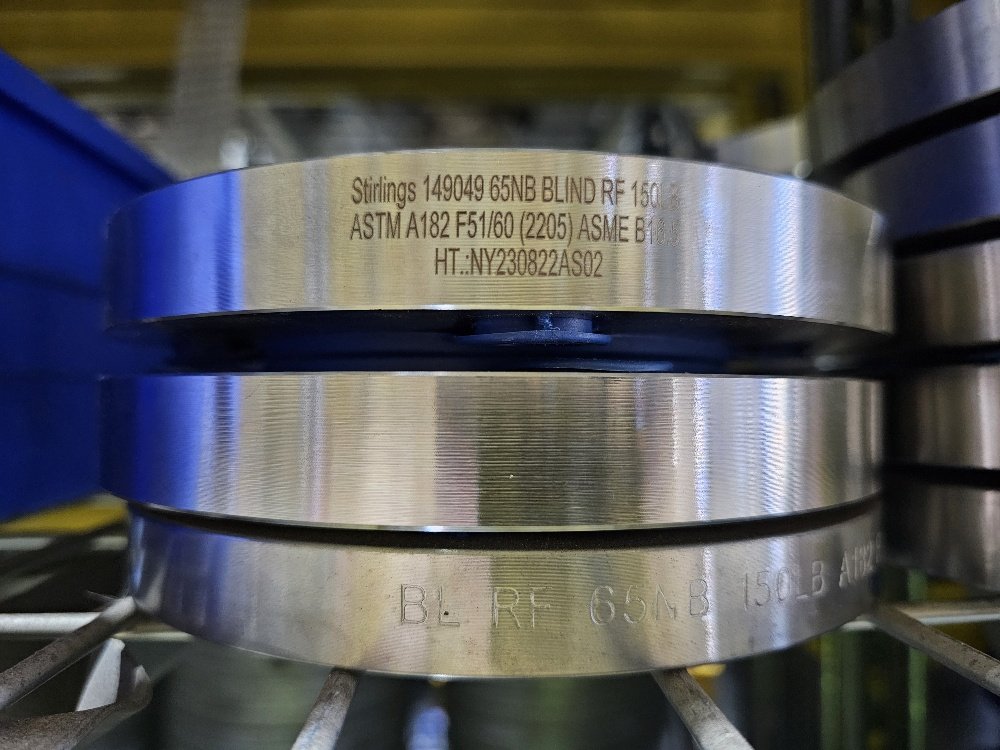What is Duplex Stainless steel? Our product range at Stirlings
When thinking of different types of Stainless steel, we might think of different chemical compositions (i.e. increased Moly) resulting in different types of Stainless. While this is true, the hardening method can be just as vital when getting Stainless with the desired properties - and the end result can be a uniform (Ferritic/Austenitic) or even mixed (Duplex) structure. In this blog we will explore what Duplex is, how it differs from Ferritic and Austenitic Stainless steel, how it is made, as well as its benefits, applications and our stock at Stirlings!
What does Duplex mean?
You may be familiar with the word “Duplex” referring to a building split into two units. And you can think of Duplex Stainless steel in a similar way – Duplex refers to Stainless steel being comprised of almost equal parts of two different crystalline structures: Ferritic and Austenitic.
Thanks to these two structures, this gives this range of Stainless steel the properties of both Ferritic and Austenitic Stainless steel.
To understand how Duplex steels work, first let’s compare Austenitic and Ferritic Stainless steel. In order to achieve their structures, certain elements known as “ferritisers” and “austenisers” are included in the Stainless steel’s composition, as below.
Ferritisers – Cr (chromium), Si (silicon), Mo (molybdenum), W (tungsten), Ti (titanium), Nb (niobium)
Source: jmcampbell.com
Source: jmcampbell.com
Austenitisers – C (carbon), Ni (nickel), Mn (manganese), N (nitrogen), Cu (copper)
Source: jmcampbell.com
Source: jmcampbell.com
As you can see, Ferritic Stainless Grades have a predominance of ferritisers, and the Austenitics have a predominance of austenites (particularly Nickel). These different chemical compositions give different properties to the two types of Stainless, and when combined to create Duplex, as below.
To arrive at a Duplex structure with about 50% of each phase, there has to be a balance between the austenitisers and the ferritisers. This explains why the Nickel content of Duplex steels is generally lower than for Austenitics.
Duplex v Super Duplex Stainless Steel
An example of the microstructure of Duplex Stainless steel, showing the Ferrite and Austenite structures.
Source: mdpi.com
The difference between Duplex and Super Duplex Stainless steel is the Chromium, Molybdenum and Nitrogen contents.
Benefits
Compared to Austenitic and Ferritic Stainless steel, Duplex provides:
Increased Tensile Strength
Up to double that of Austenitic and Ferritic Stainless steel.
High Corrosion Resistance
Depending on the Grade, Duplex Stainless steels offers comparable (or better) corrosion resistance as common Austenitic grades. For alloys with increased Nitrogen, Molybdenum, and Chromium, there is a higher resistance to both chloride induced pitting and crevice corrosion.
High Toughness and Ductility
Duplex Stainless steel is often more formable under pressure than Ferritic grades and provides greater toughness.
Duplex in general has good toughness down to -50°C and up to 300°C.
Excellent Resistance to Stress Corrosion Cracking
The 50% Ferrite microstructure means that Duplex Stainless steel outperforms the lower alloyed Austenitic Stainless significantly in its resistance to stress corrosion cracking.
Cost Effectiveness
Duplex Stainless steel offers all of the above benefits while requiring relatively low amounts of Molybdenum and Nickel. This means that it is a lower-cost option than many traditional Austenitic grades of Stainless steel. The price of Duplex alloys is also often less volatile, making it easier to estimate costs. The higher strength and corrosion resistance also means that many parts made using Duplex Stainless can be thinner than their Austenitic counterparts in certain structural applications such as as tanks, sections and members.
Industry uses
Duplex and Super Duplex Stainless steels are popular in a variety of industries and markets thanks to their numerous benefits. Some of these include:
Offshore and near-shore operations such as oil drilling, desalination, water treatment, and other industrial operations;
Chemical and liquid processing;
Naval parts and components;
Pollution control equipment;
Pulp and paper production;
Construction;
Hot water and brewing tanks;
Civil and structural applications – columns, beams, struts;
Reinforcing materials in coastal applications.
Our range at Stirlings
Round Bar
Grade 2205 Duplex
10.00mm - 400.00mm
Grade 2507 Super Duplex
15.88mm - 400.00mm
Plate
Grade 2205 Duplex
3.00mm - 65.00mm thick
Grade 2507 Super Duplex
3.00mm - 50.00mm thick
Pipe, Flanges and Pipe Fittings
Grade 2205 Duplex
½” - 12”
Grade 2507 Super Duplex
1” - 12”
Tube and Tube Fittings
Grade 2205 Duplex
1” - 4”
Get your hands on it
Check out our Products page and our catalogue to see our full range, and contact us to make your order!
A rhyme for your time
The benefits of ferrite and austenite unite - Duplex Stainless shows its fantastic might!
Sources














